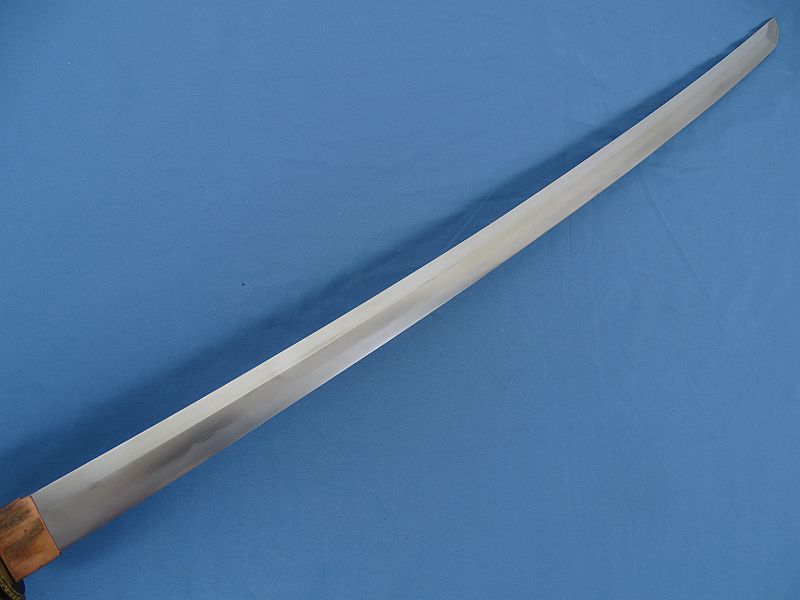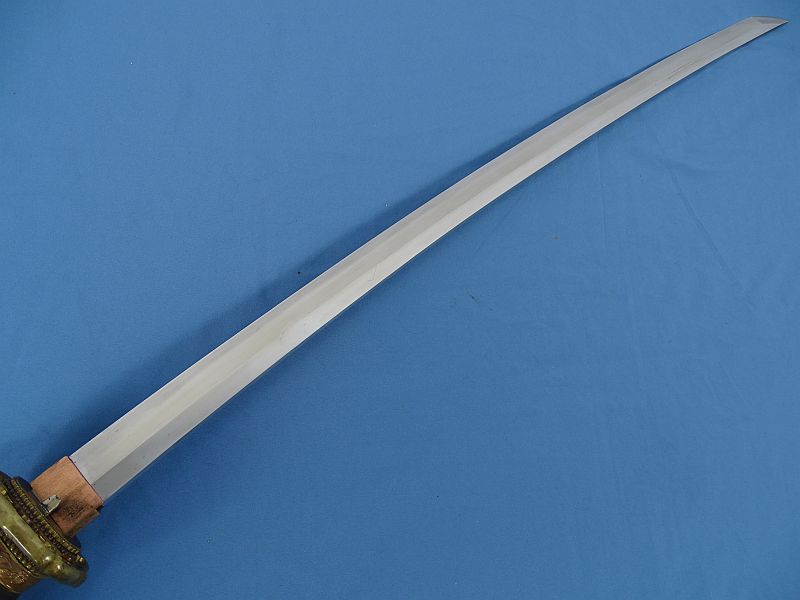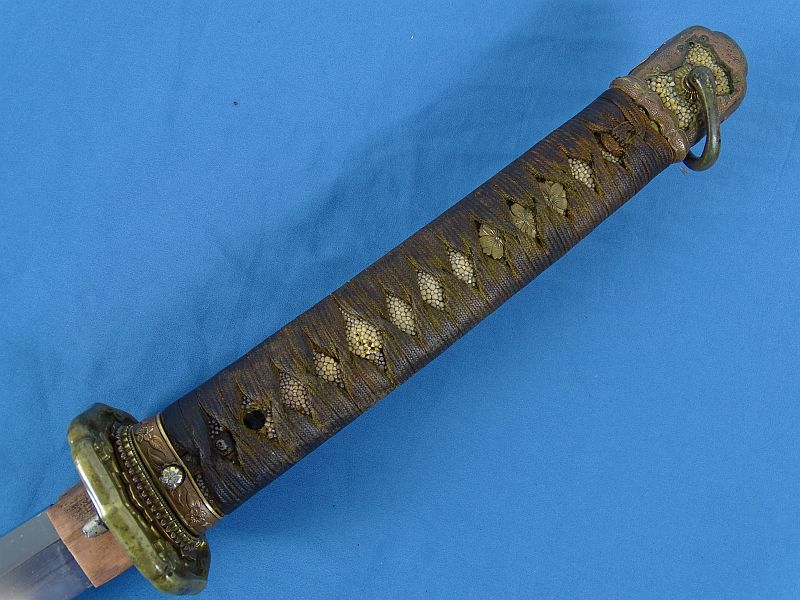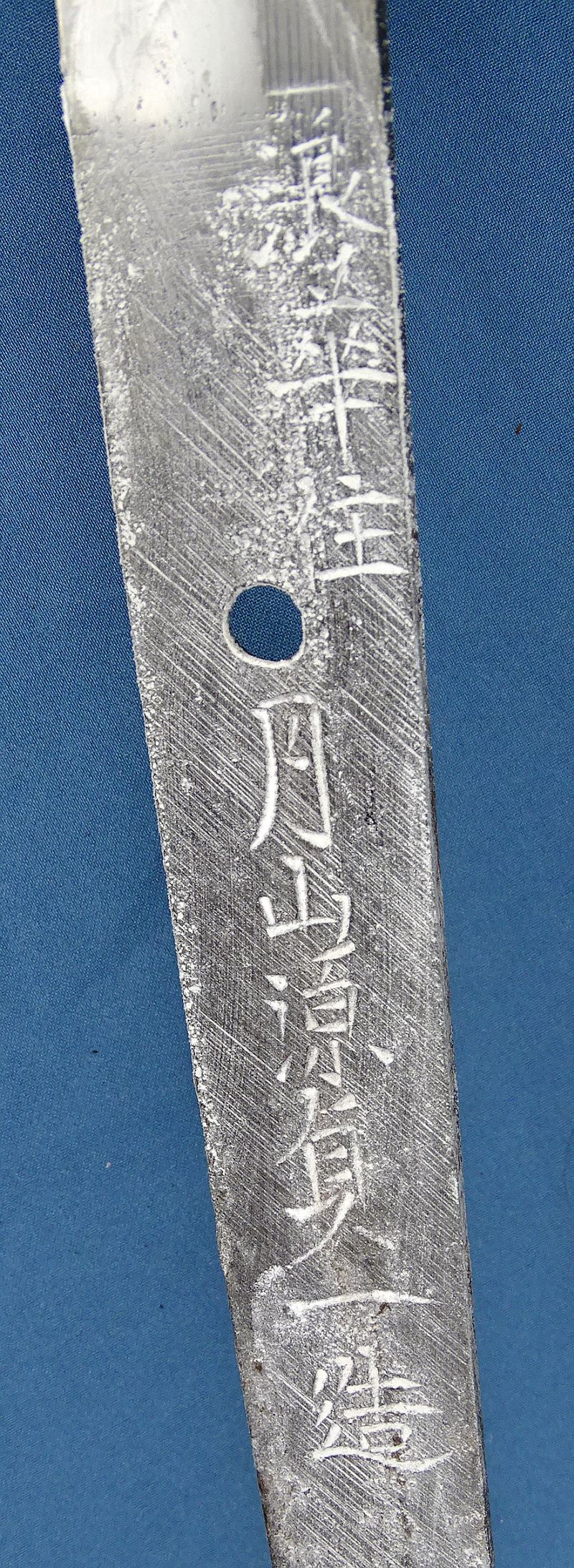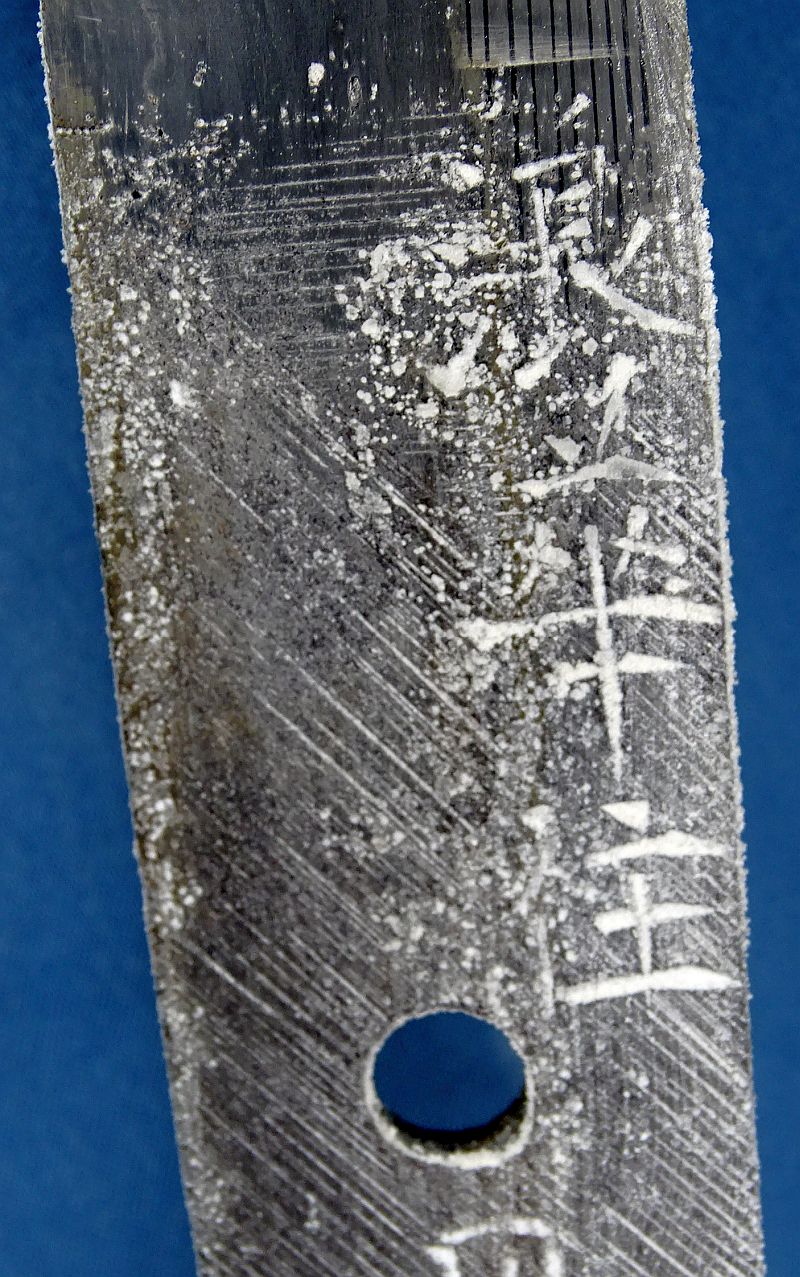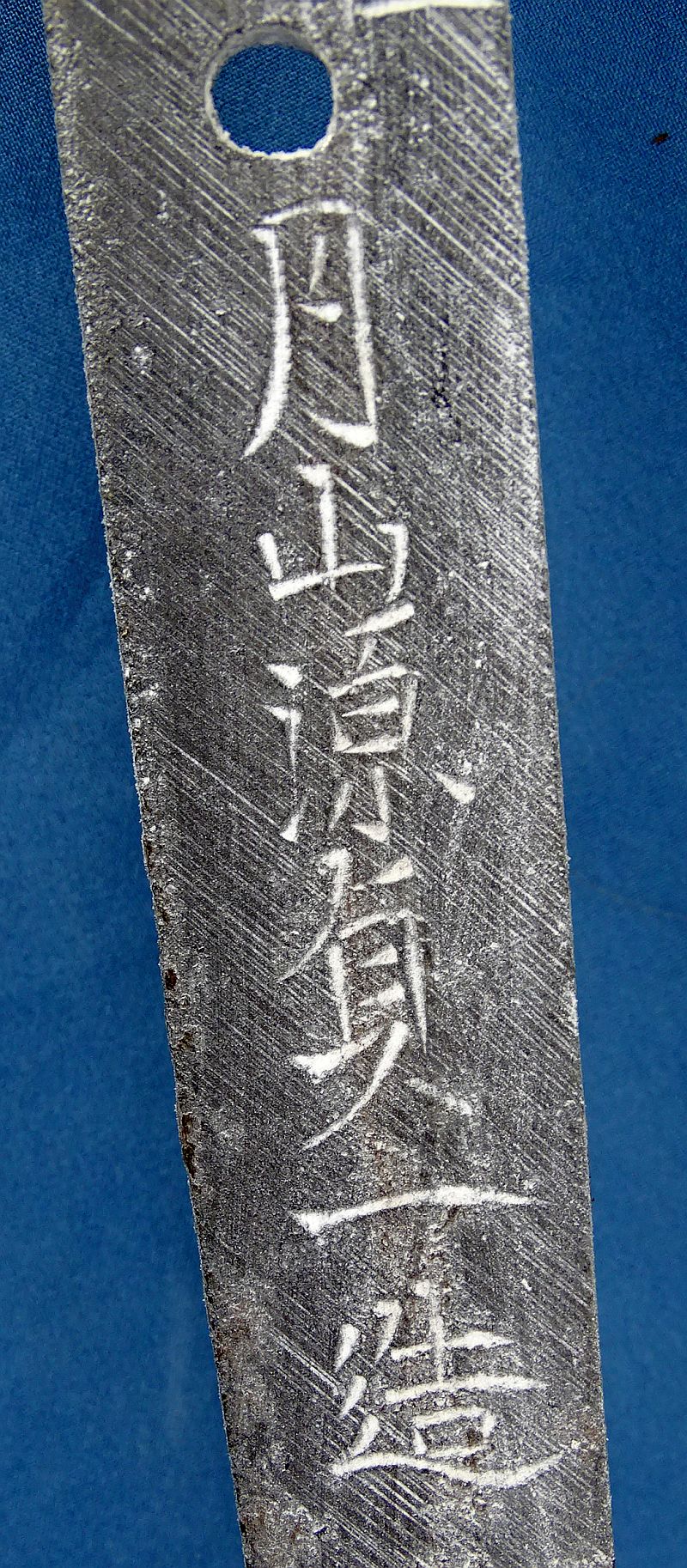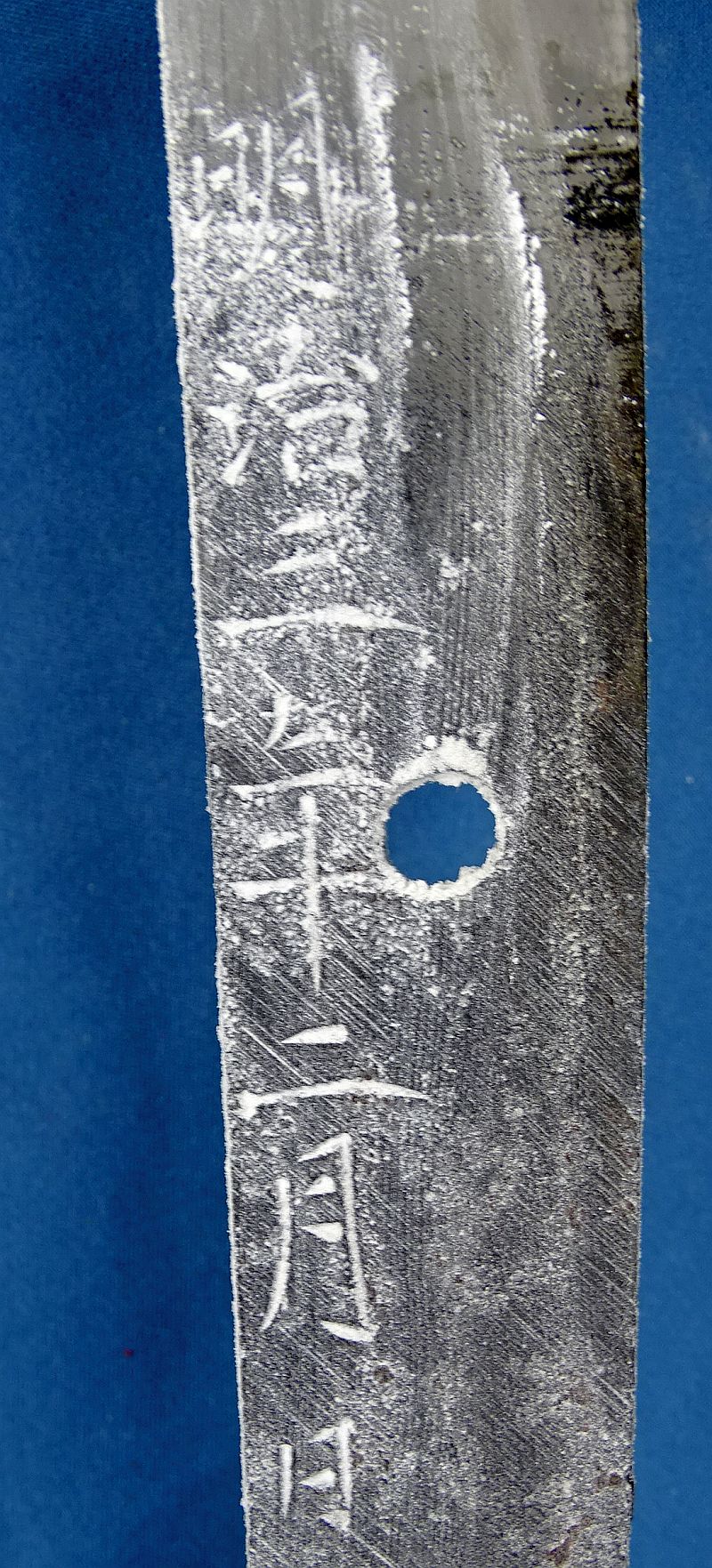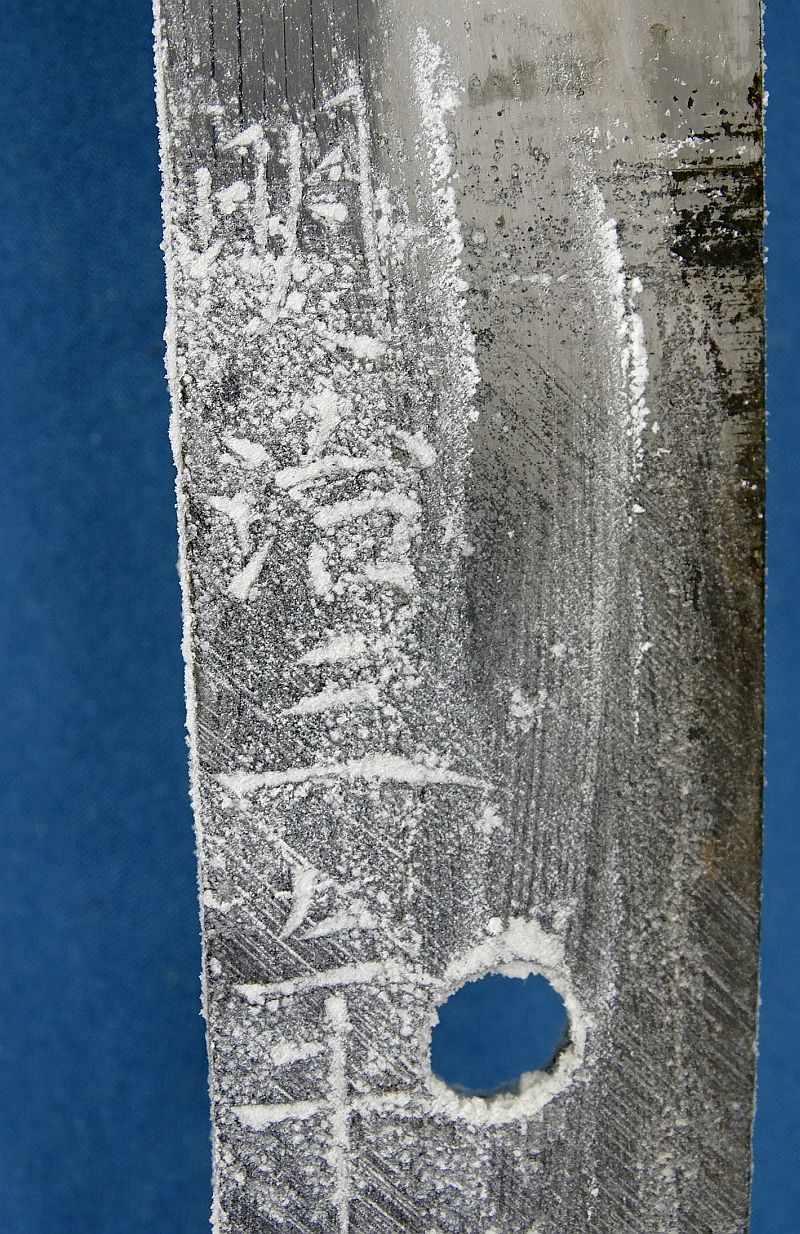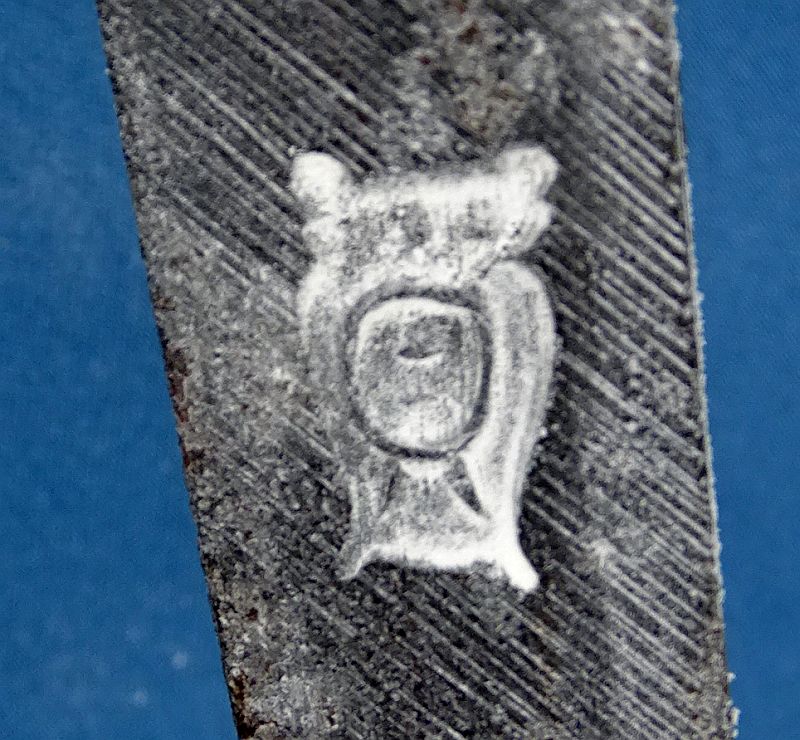Signed 1870 Dated Blade by a Noted Swordsmith with Owl Tang Mark and Family Crest Mon on Grip in WWII Japanese Army Officer Mounts
$4,850.00
The sword has an overall length in the scabbard of approximately 39 inches, with a blade length of approximately 25-1/2 inches. The blade is generally bright,with a visible flowing temper line and it is without chips, nicks, or active rust. The sword tang is dated in February of 1870 and it is signed “Made by Gassan Minamoto Sadakazu”, who was a “jōjō-saku”, meaning a swordsmith who was ranked as “Highly Superior”, just below the highest rating of “saijō-saku“, or “Grand Master”. The tang also has a hot-stamp at the bottom is a stylized part of his name, “Sada”. Sadakazu was born in 1836. His actual name was “Gassan Yagoro”. The ray skin grip is wrapped in the traditional style with golden brown fabric that shows staining from repeated handling in the field. Beneath the wrapping are the traditional military menuki of three cherry blossoms on each side. The brass tsuba guard is the solid brass style with relief cherry blossoms. The scabbard of the sword retains most all of the olive brown paint, showing some minor scuffs. Overall excellent condition. This listing includes a photograph of swordsmith Sadakazu from the reference book “Japanese Swordsmiths” by Markus Sesko. A copy of the photograph is not included with the sword.
was appointed teishitsu-gigei ́ in Meiji 39 (1906), this rank was about the predecessor of the modern ningen-kokuhō and Sadakazu
was besides of Miyamoto Kanenori (宮本包則) the only swordsmith who held this important rank, his gō were Kōkensai (光顕斎), Unryūshi (雲龍子), and Suiyūshi (水勇子), he died on July 11th 1918 at the age of 84, we know dated blades from the third year of Kaei (嘉永, 1850) – he was 15 years old at that time – until his year of death in 1918, that means he was about 70 years active as a swordsmith, he mastered all traditions and is considered together with Honjō Yoshitane (本荘義胤) and Kurihara Nobuhide (栗原信秀) as the greatest horimono artists of the bakumatsu and early gendaitō era, he also played an important role in the transmission of the craft of sword forging to the later gendaitō smiths, so some count Suishinshi Masahide as founder, and Gassan Sadakazu als last great master of the shinshintō, his blades have a rather long nagasa, a shallow sori, a wide mihaba, and a chū or an ō-kissaki, that means altogether a magnificent shape, but also some sugata in the style of the early Muromachi period are known, blades made during the Keiō era (慶応, 1865-1868) are especially large, he made many copies of kotō works and worked after the ban on wearing swords also for the military where more narrow and shorter blades were in demand, he forged the ayasugu-hada of the Gassan school, a masame of the Yamato tradition, or also a mokume, ko-mokume, or itame, the hamon is a beautiful chōji-midare in nioi-deki with a narrow yakihaba and long ashi in the style of the Ōei-Bizen school (応永備前), a ko-chōji-midare in ko-nie-deki, a chū-suguha-hotsure in the style of the Yamashiro tradition, or a gunome-midare with thick nie and nioi and plentiful hataraki in the style of the Sōshū tradition, the bōshi is maru, midare-komi or yakitsume, various horimono are known, for example dragons, dragon and a plum tree, ken-maki-ryū, waterfall, Fudō-Myōō, bonji and many more, all done very elaborate and skilful, some remind of horimono of Ikkanshi Tadatsuna (一竿子忠綱), his tangs are long and carefully finished, they have a kurijiri and sujikai-yasurime with keshō, during the Keiō and Meiji eras he signed with a characteristical koku ́in, in Taishō five (1916) he forged a tachi on the occasion of the enthronement of emperor Yoshihito (嘉仁, 1879-1926), jōjō-saku.




